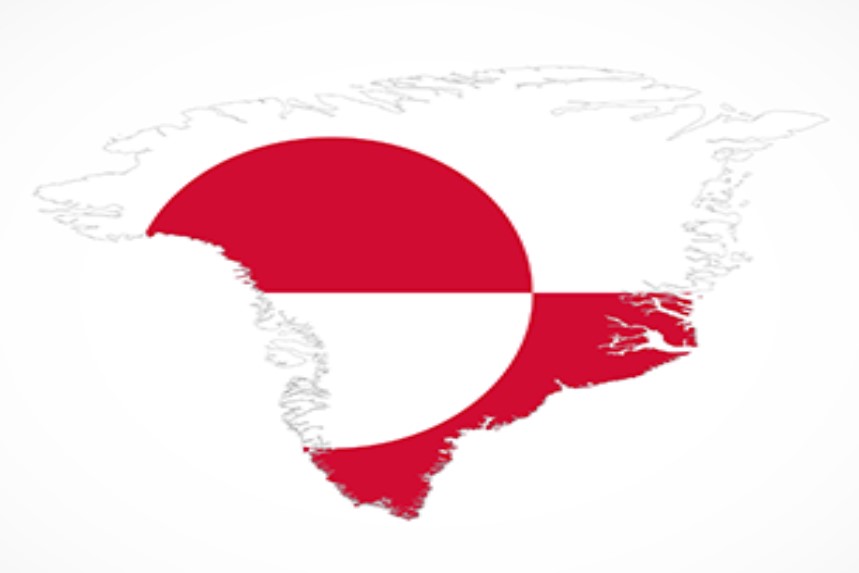
Greenland (Kalaallit Nunaat) is the world’s largest island (with a population of under 60 thousand) and is noted for its vast tundra and immense glaciers.
The Greenland ice sheet is the second largest body of ice in the world covering around 80% of the surface of Greenland. It is an average of 1.67 km thick, and over 3 km at its thickest. It is almost 2,900 kilometres long and 1,100 kilometres at its widest. The ice sheet covers 1.7 million square kilometres (about 12% of Antarctica).
Although officially part of the Kingdom of Denmark, the island’s home government is responsible for most domestic affairs. Most travelers come to Greenland for the glaciers, ice fields and fjords. The Greenlandic people are primarily Inuit who call themselves Kalaallit (West), Inugguit (from Thule district), or Iit (East).
Prince Christian Sound
Our first touch into Greenland was while still on the ship. The Prince Christian Sound is a 100 km long channel that connects the Labrador Sea with the Irminger Sea.
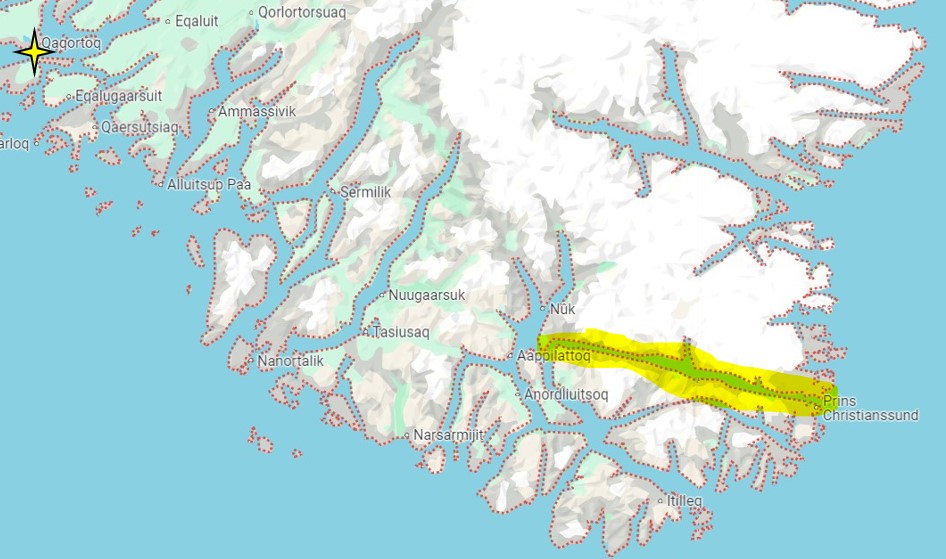
The waterway is in Southern Greenland and separates the mainland from the many islands that make up the Cape Farewell Archipelago near the southernmost tip of Greenland. The channel is narrow, sometimes only 500 metres wide and almost all the way along is a long fjord system, surrounded by steep mountains generally between 1,200 and 2,220 metres. Many glaciers go straight into the channel where they calve icebergs.
Our day started with a few minke whale sightings, closely followed by our first iceberg of the day. From here the day just unfolded for the next few hours of whales, glaciers and icebergs.










The only indications of human life to be seen is the Ikerassasuaq weather station (using the Greenlandic name for the sound) as you enter and then the small village of Appilattoq (with about 100 people). Animal life however is considerably more abundant, with minke, fin and blue whales seen frequently, as well as ringed and bearded seals that haul out on the floating ice.

For us it was just a really nice day of floating along the waterway, staring out the windows at icebergs, glaciers and wildlife.











Qaqortoq

Our first actual touch of land in Greenland came at the small town of Qaqortoq (the Q’s are pronounced as K’s making the town phonetically Kak-or-tok) . With about 3000 population Qaqortoq is a large town by Greenland standards. The area around Qaqortoq has been continuously inhabited since prehistoric times. Beginning with the Saqqaq culture roughly 4,300 years ago. Written records of South Greenland begin with the arrival of the Norse in the late 10th century.
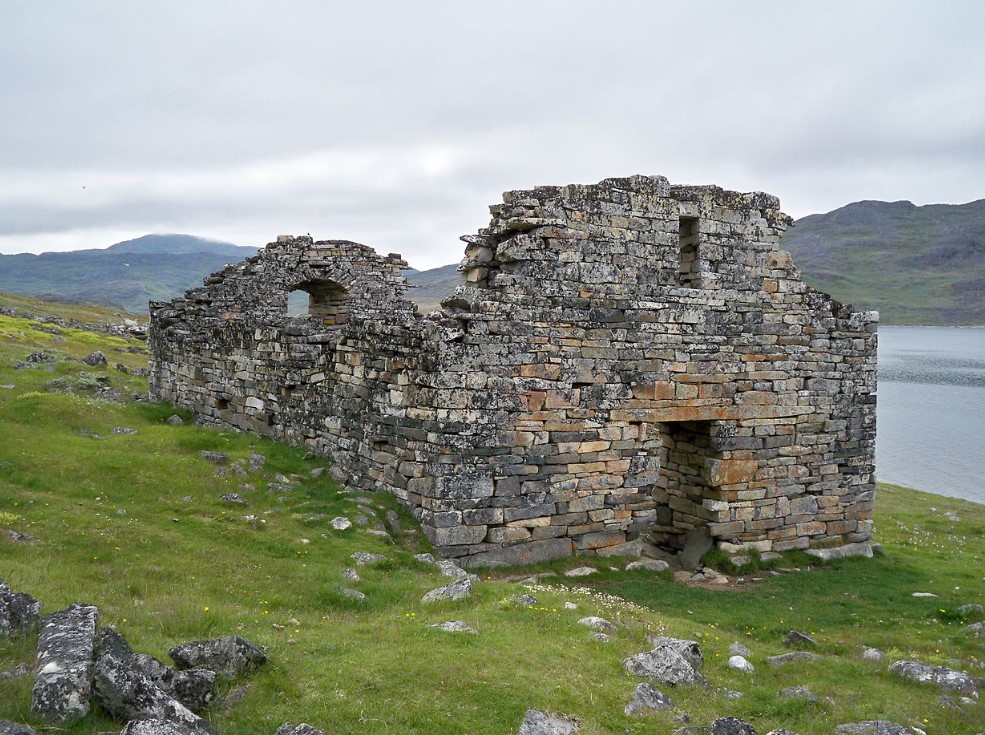
The ruins of Hvalsey are the most prominent Norse ruins in Greenland. They are about 19 kilometers out of town.
The site has the ruins of two great halls, 14 houses and a church house.
According to the Icelandic Book of Settlements the farmstead (Landnámabók) was established by Erik the Red’s uncle, Þorkell Farserkur (Thorkell Farserk) in the late 10th century.
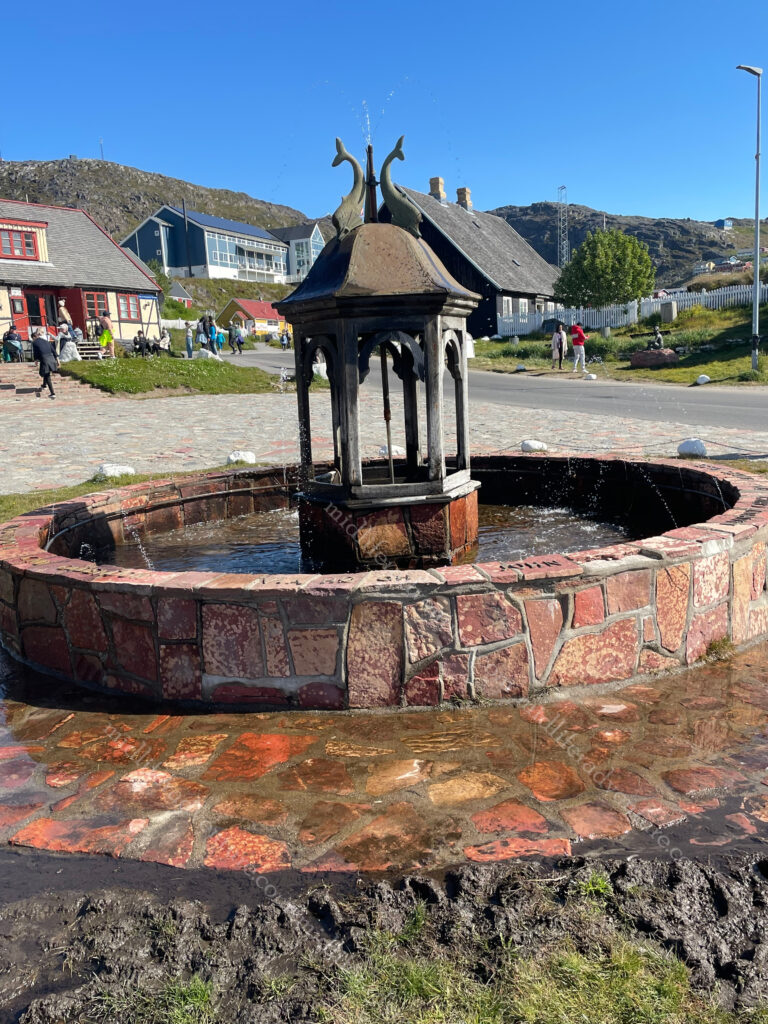
The town itself is home to numerous colourful, historical colonial buildings along with the oldest fountain in Greenland, Mindebrønden, a spouting whale fountain, finished in 1932.
Our first place of visit was to hop over to the Great Greenland shop and factory that specialises in sealskin clothing . The town has a large showroom with a wide range of products, all produced locally. There is a warning though that before buying you should check that you will be allowed to bring items made of sealskin into your country of residence.
For those old enough to remember the outrage of the baby seal clubbing of the 1980’s then you will be pleased to know that things have come a long way. The furs and skins are amazingly warm and the showroom is quite the experience.







Seals are abundant in Greenland with an estimated total population of 12 million. According to statistics about 82,000 harp seals, 78,000 ringed seals and a much lower number of hooded seals are killed each year. The modern day hunting is much more humanely managed with hunters licenced, with quotas, no clubbing, and with close scrutiny. Young seals and mothers with young are fully protected.









A quick stop at a local cafe for a bight of my first ever musk ox burger, washed down by a local beer. All through the town of Qaqortoq, carved into boulders and lichen-covered rock faces, are carvings of whales, faces, and other traditional designs.
Together these stoneworks form a citywide open-air sculpture gallery known as Stone & Man. Today there are 24 separate carvings and sculptures, some took the shape of fully shaped sculptures made out of local boulders, while others looked more like recreations of ancient tribal markings of fish and whales, and others just look like graffiti.

There is also the Qaqortoq Museum, housed in the town’s oldest building (originally the town’s blacksmith’s shop).
Glaciers and icebergs abound and can be visited on either a boat tour or an unforgettable helicopter flight. You can also hike to the glacier near Narsarsuaq before you take your transfer to Qaqortoq.
Igaliku, is a small sheep farming community and Viking religious site. You can see the remains of the Garðar Cathedral, residence and two large cow barns.
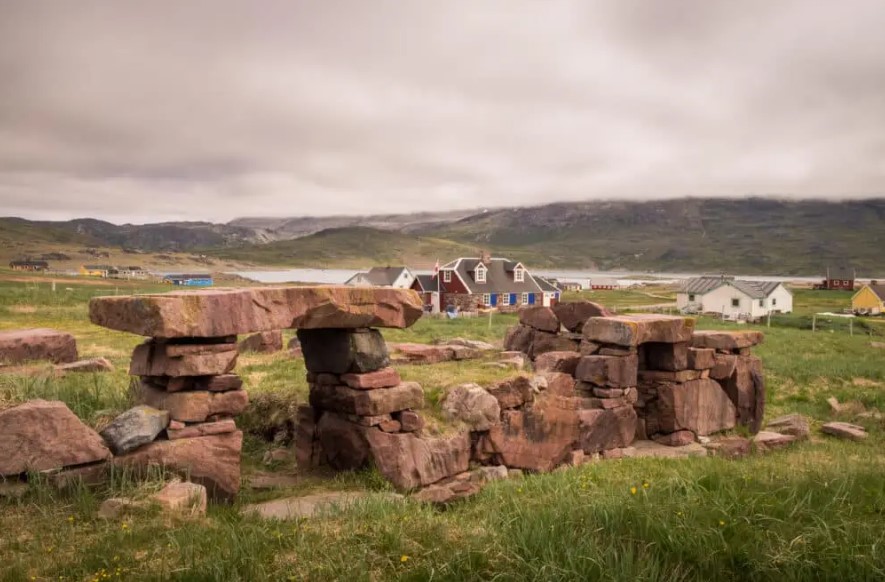
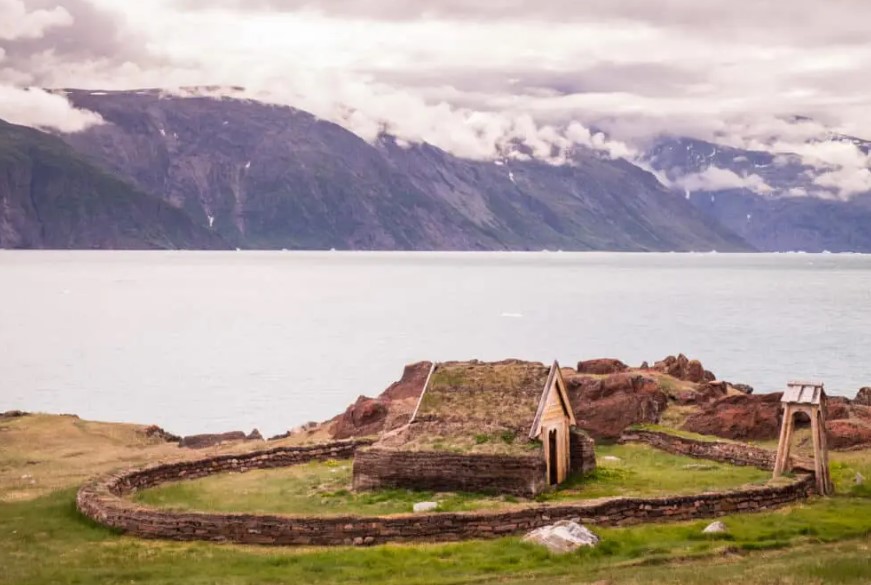
Qassiarsuk hosts Brattahlíð, the original site where Eric the Red originally settled . The ruins of his settlement have been reconstructed (his longhouse and Thodhildur’s church).
If you are particularly cashed up, you can catch a boat or helicopter to one of the few thermal pools in the country. Greenland is not volcanic and has only a handful of places with hot springs, one of which is Uunartoq Hot Spring.
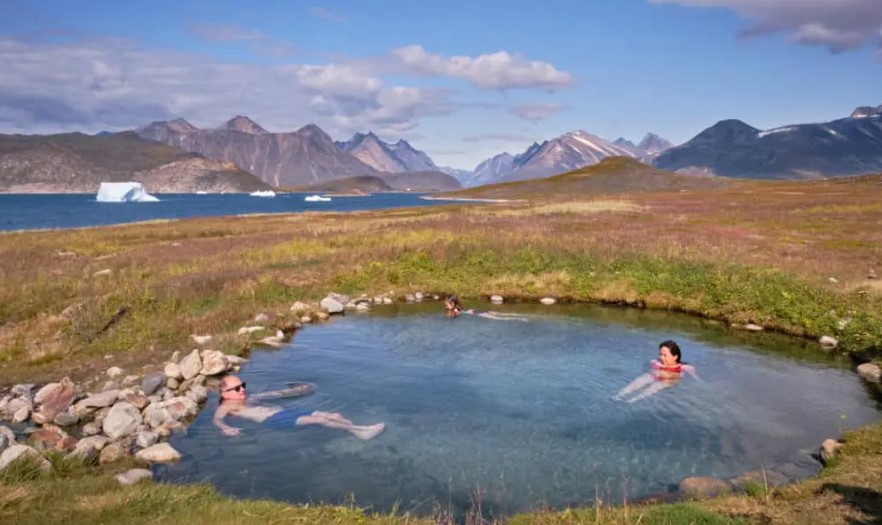
Nuuk
Nuuk was scheduled for our next stop but due to adverse weather conditions the stop was pulled and other venues in Canada (Nova Scotia) were added to our itinerary instead.
But for background only.
Nuuk (Godthåb) is the capital of Greenland and like most cities in Greenland, it is located along the ice-free, fjord-lined southwest coast, offering views of both the rolling landscape and the icy waters beyond. Nuuk contains a third of Greenland’s population and its tallest building. It is also the seat of government and in January 2024, had a population of 19,872.
While we just touched on two points of Greenland, in reality the majority of it is wildly inaccessible with 80% of its landmass made up of by a massive ice sheet.
